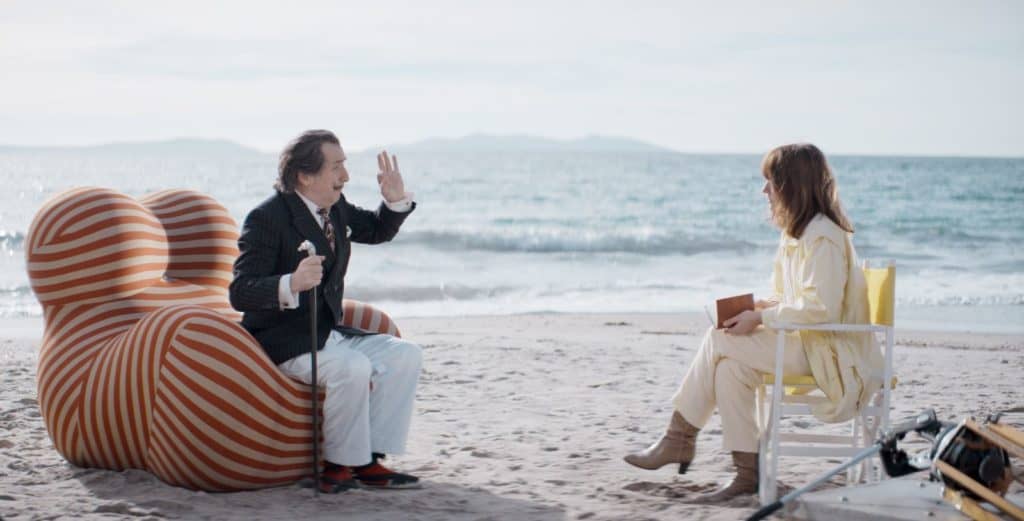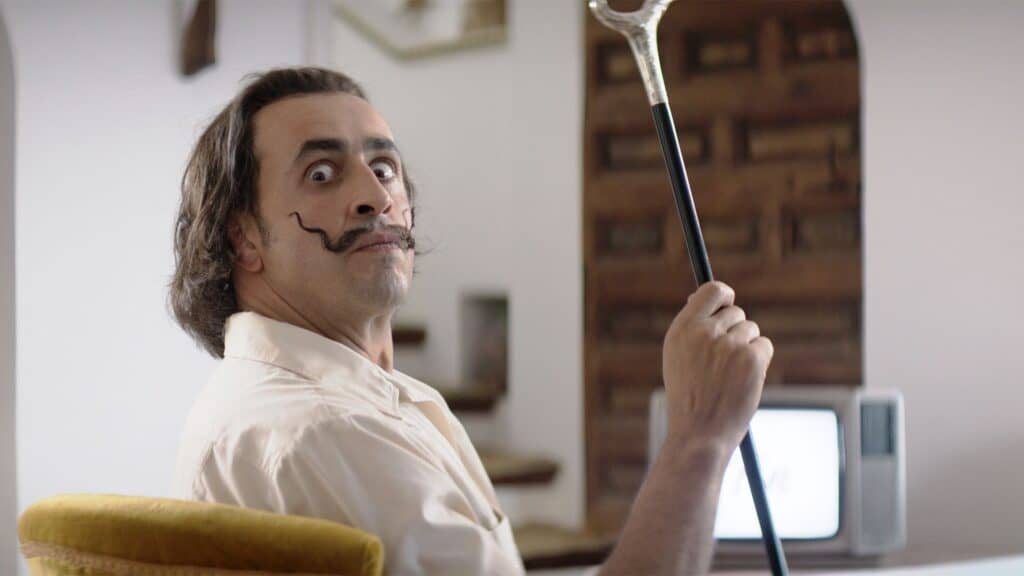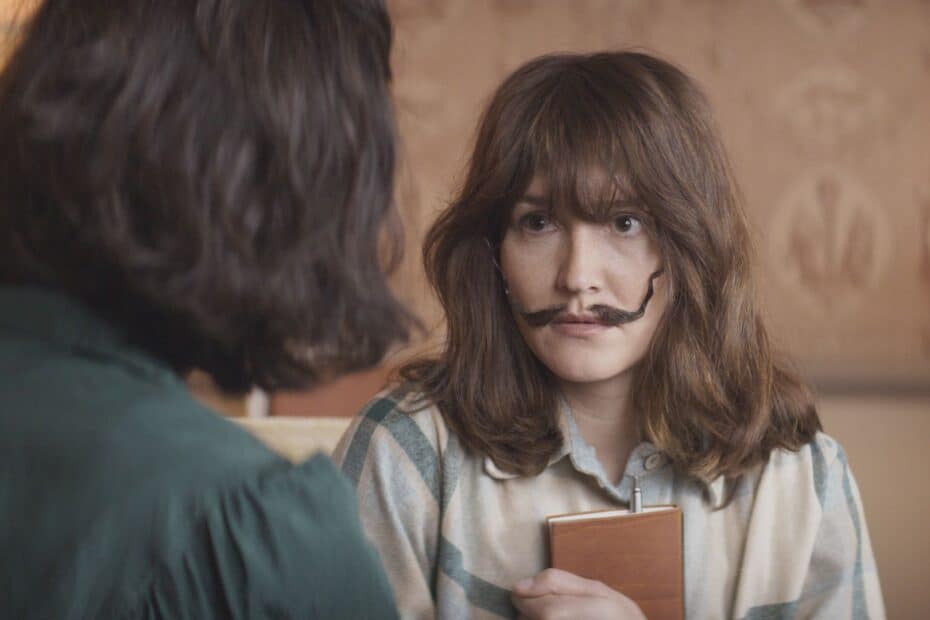Quentin Dupieux is a prolific director. Daaaaaali! is his second film of the year, following Yannick. However, the total duration of both films is only a mere 146 minutes. Less than way too many individual films nowadays. Dupieux is known for films such as Rubber (2010) and Deerskin (Le Daim 2019) and is somewhat of an anomaly in the current French cinematic landscape. The new film premiered at the Venice Film Festival and was later screened at the Black Nights Film Festival as well. The effect that the film has at a festival is an interesting one, especially when it is screened during the last days of any given fest,
The new opus is about Salvador Dali. It’s hardly a biopic. A journalist, Judith (Dupieux regular Anaïs Demoustier), wants to interview the famous artist but encounters several setbacks. Demoustier will also encounter several Dalis since the character is played by five different actors. However, the film begins (and ends) with a live version of one of his works, more specifically, Fontaine nécrophilique coulant d’un piano à queue from 1933. Then we see Judith talking about her past and how she suddenly decided to change her career and become a journalist. Her story is interrupted by a publicist who informs her that Dali is on his way. She has to get ready quickly, or does she?

What follows will be a variation of a gag from Tati’s masterpiece Playtime (1967), and this is not the last cinematic reference in Daaaaaali!. When Dali finally arrives, he is appalled to find that there is no camera present to document the interview and resolutely leaves. In one way, one could say that the rest of the film is about Judith’s attempts at getting her interview. Her project will change shape several times to pander to the artist’s whims. Still, this storyline is little more than a thread to hang a bunch of diverse ideas on. Those ideas are meta in nature, and talking about how the film unfolds is hardly a metaphor.
Daaaaaali! Endings explained?
In some instances, it is pretty clear where those ideas came from. Dali famously made Un chien andalou (1929) with Luis Buñuel, and some structural elements are clearly lifted from his films from the seventies. Once that is evident, the turning points that are supposed to be surprising really are not. That is not as big a problem as it may sound since there are so many pleasures in the film, whether the structure manages to surprise or not. This is true even if you happen to think (as I do) that it’s not Buñuel’s strongest decade as a director. The actors always seem to enjoy themselves in Dupieux’s films, and Daaaaaali! is no exception.

The actors’ enjoyment is infectious and a key factor in the film. If I haven’t revealed any details or attempted any analysis of the film, it is because Daaaaaali! is a film that is all too rare today: An intelligent work that doesn’t wear its wit on its sleeves but one where the main object is to entertain and make the audience laugh—something that was accomplished in abundance at both screenings I attended so far. Combined with the concise running time, the film contrasts sharply with all the overlong films we are forced to endure at festivals.
It’s no wonder that Dupieux’s film has been immensely popular on this year’s festival circuit. It’s a textbook definition of the notion that brevity is wit, even though it will occasionally make you believe that there is no end in sight. That also goes for the teaser below, which touches on the film’s themes without giving away too much.

